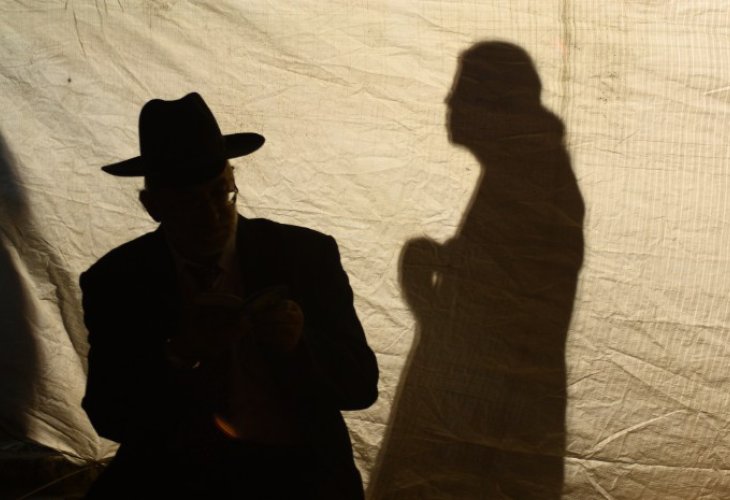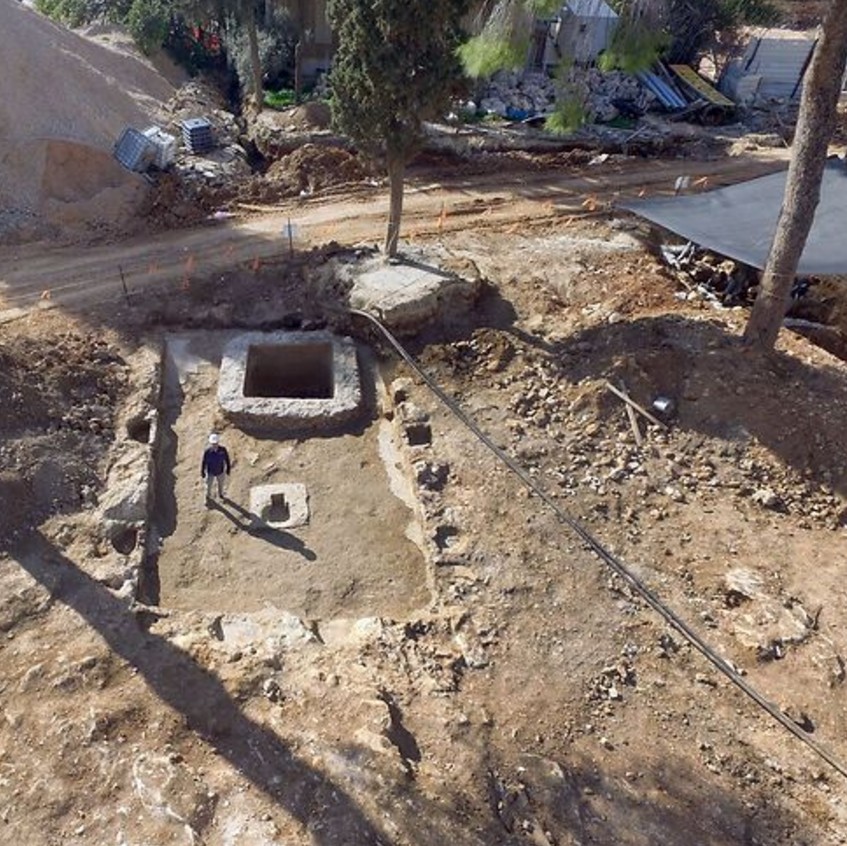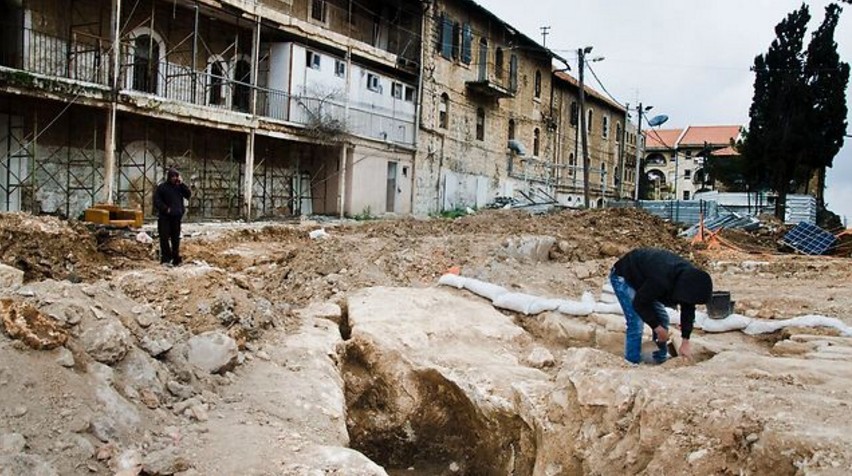Ancient Bathhouse Unearthed in Jerusalem's Schneller Compound
Archaeological excavations in Jerusalem have uncovered relics dating back 1,600 years.

During the construction of residential buildings for the ultra-Orthodox community by the "Merom Jerusalem" company, ancient remains have been uncovered, shedding light on Jerusalem's past. The archaeological exploration revealed a bathhouse and a wine production facility from the Roman or Byzantine period, approximately 1,600 years ago.
Evidence for the existence of a bathhouse was discovered on site, featuring clay pipes used for heating. Some of the clay bricks found bear the stamps of the Tenth Roman Legion, one of the four Roman legions that participated in the conquest of Jewish Jerusalem.
 Gath and winepress area (Aerial Photo: Israel Antiquities Authority)
Gath and winepress area (Aerial Photo: Israel Antiquities Authority)In addition to the bathhouse, a large facility for wine production was found. The facility includes a pressing surface paved with white mosaic. At its center is an anchoring pit for a screw press, which assisted in extracting the wine from the grapes. Surrounding the area were eight cells intended for storing vines or creating mixtures of wine with additional flavoring agents.
Archaeologists have deduced from the findings that the local inhabitants made a living, among other things, from vine cultivation and wine production. According to their estimation, the Schneller site, formed in the manner of a manor house, serves as a settlement extension of the central site previously uncovered at the Binyanei HaUma, near the Schneller compound.
 Excavations at the Schneller site (Photo: Courtesy of Israel Antiquities Authority)
Excavations at the Schneller site (Photo: Courtesy of Israel Antiquities Authority)"It's worth noting the positive collaboration with the ultra-Orthodox community. The public usually hears about the conflicts between archaeologists and the ultra-Orthodox on issues like burial sites, but they are not aware of the daily joint efforts and the interest shown by this sector in archaeology," said Jerusalem District Manager, Amit Re'em.
Alex Wiegmann, the excavation director from the Israel Antiquities Authority, stated: "Jerusalem consistently demonstrates that wherever you throw a stone, you'll find ancient remnants tied to its illustrious history. The archaeological findings paint a picture of a lively and vibrant Jerusalem, from ancient times to the modern era."

